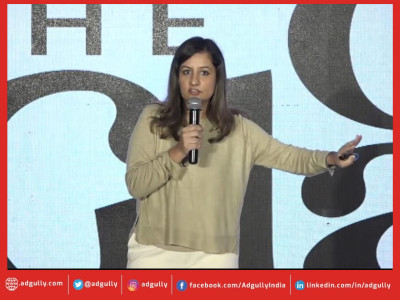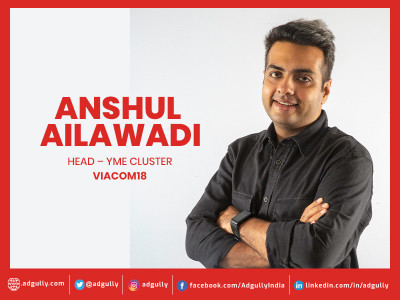OTT players need to aim for the highest value per user: Akash Banerji
Stepping into the world of entertainment 10 years ago, Akash Banerji, Head - AVOD Business, VOOT, has had a ring side view of the emergence of the OTT industry in India. Making OTT and the change that it has brought about in the Media & Entertainment landscape his focal point, Banerji had several key observations to share in his keynote address at the inaugural edition of SCREENXX, currently underway at the Taj Lands End in Mumbai.
Watch the complete session
Speaking about the scenario when he joined the M&E industry 10 years ago, Banerji noted that in those days this industry had just three business models – Advertising led, Distribution led and Syndication revenues.
“The revenue in advertising was marked by finite inventory. The centre of this jigsaw puzzle has always been content. The users were non targetable, aggregated and unidentifiable...In this world, if you are not sharply taking enough steps to determine the value of your user, then you don’t know the worth of your business,” he observed.
And then, OTT happened... When the race for OTT began, there were a plethora of business models and new information about the consumers. Companies had to get out of their comfort zone of relying on aggregates.
Also read: Stage set for meeting of best minds in Digital video & OTT at SCREENXX today
“The entire OTT industry’s user story began and ended with content. There was a mad race amongst different OTT platforms to expand their content offerings. That has been one of the biggest issues,” Banerji opined.
On the end of the spectrum, businesses and brands had started focusing on the story of users. They began asking questions such as what is the value of existing users and the cost of servicing them.
“The story in the bigger economy is determined by clearly evaluating the value of the user,” he observed.
Banerji here shared the example of some of the biggest tech companies such as Facebook, Google and Amazon, whose success can be credited to their enormous scale. “These companies might be working in the e-commerce space, travel space, or OTT space, but that is just one part of the story,” he added.
But what has led to their tremendous success is by understanding the value of their user. As Banerji affirmed, “The value of a user to Google is 150-odd dollars. The value of user to Facebook is the same, but the value of a user to Amazon is $700 because of how they derive that value.”
Even though Amazon offers an OTT service, their business model is led by transactions and that determines each user’s value to their business.
“Traditionally, the valuation of any company or start-up is done by evaluating their discounted cash flow (DCF). But the problem with DCF is that it continues to operate with aggregates. You assume that every user is the same. Now, platform companies have enough and more information of the user. The valuation of companies is not done by the top down approach or the DCF story any more, but by the user story,” Banerji pointed out.
Sharing an important insight about the OTT industry, he said, “The more the users start watching videos, the more I need to spend servicing them, because of a cost called content delivery network.” Thus, as new users come onboard, the cost keeps increasing as well.
According to Banerji, Scale, Stickiness and giving value to the user are the key factors in the user base valuation for one’s business.
To emphasise on Scale, he cited the example of Facebook as he noted, “What makes it a valuable company is its scale of 2 billion monthly active users.”
For Stickiness, he said, “Twitter is a great platform, but when you compare time spent on it with that of WhatsApp, Facebook or Instagram, they are extremely different. For Twitter, the boon is 140 characters, but that is also their bane because the users don’t have more reason to stay on the platform. The more reasons you create for users to remain on your platform, the more avenues emerge to monetise that user.”
Thus, scale on its own isn’t enough.
“The value of the user is determined by gauging the multiple transactions that they generate. Which is why Amazon’s strategy of bundling their OTT service with their Prime subscription works,” he added.
Speaking further on how to determine the value of a user, Banerji noted that the growing spree of mix & match business models in the OTT space in India is because players are trying to determine the value of their users. According to him, “Platforms make this evaluation by considering the projected cash flow per user, user renewal and user lifetime.”
“The beauty of digital is that the world is no longer about aggregates. If you are still operating in that world, then you are committing a crime against your business,” he cautioned.
Banerji wrapped up his address by citing the example of Chinese super aggregator WeChat, and observing, “The best companies are the ones where the value per user is the highest and cost of acquisition of a new user is minimum. That is a great business to be in, because it eliminates entry barriers for the competition to come in. If the value per new user is high, how will you scale up your business? That’s why the biggest companies are entering the ecosystem play.”

















Share
Facebook
YouTube
Tweet
Twitter
LinkedIn